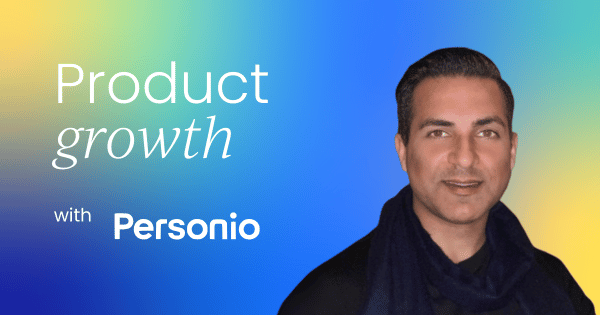Are you tracking the right metrics, or just the ones that make you feel good?
While many companies obsess over vanity metrics like page views and sign-ups, the most successful ones focus on what actually drives sustainable growth and enterprise value.
But how do you identify where your biggest growth opportunities lie? That’s exactly what I’ll share with you today.
Here’s a taste of what this article covers:
- The proven formula for product growth
- A practical framework for building sustainable growth loops
- How to identify your highest-impact growth opportunities
- Real-world examples from Google One, Duolingo, and Facebook
Let’s dive in.
The formula for product growth
So, what is product growth? Here’s my go-to formula:
Product growth = self-serve + efficiency
Self-serve is the most obvious part of the equation. It's about building products that enable both prospects and existing customers to experience the value you offer.
Think about all those free trials you’ve used, where you get to try out the product before you commit to paying. Instead of a salesperson demonstrating the value, the user experiences it themselves.
In the context of product growth, efficiency is about how we can make our go-to-market teams – sales, marketing, implementation – more successful and better equipped to sell our products.
If we want to nurture "10x salespeople," not just "10x engineers", we have to build tools and capabilities into the product to empower them. That's how you drive efficient product growth.
The power of product-led growth
Why does this formula matter? The answer is simple: financial performance.
By every financial metric, product-led companies outperform their sales-led peers. A recent analysis from McKinsey showed that product-led companies have a 50% greater enterprise value than their sales-led counterparts. This isn’t just true on average; it’s true for the best-in-class companies in both categories.
This is a massive industry shift, and it’s a clear signal that adopting product-led principles is essential for long-term business health and sustainability. So, with that in mind, let’s get into the practical application.
A framework for growth loops
We can apply our product growth formula by thinking about the classic marketing funnel as a continuous loop.
Let’s take a look at each stage.
Driving awareness
The goal here is simple: to drive organic traffic to your website. This is the top of the funnel, where you focus on attracting new prospects.
Acquisition
Once visitors arrive, you want to get them to sign up for a free trial as quickly as possible or to book a demo with a sales representative – or both; these approaches aren’t mutually exclusive.
Conversion
This is where you turn trial users or demo attendees into paying customers. After all, the business depends on people paying for the product, not just trying it.
Activation
This is a critical, yet often overlooked, step. Activation is about ensuring that customers have a seamless onboarding journey and find immediate value after they’ve purchased the product.
This can involve implementation managers or customer success managers. However, it’s important to be mindful of unit economics and ensure the process is sustainable in terms of customer lifetime value.



 Follow us on LinkedIn
Follow us on LinkedIn



